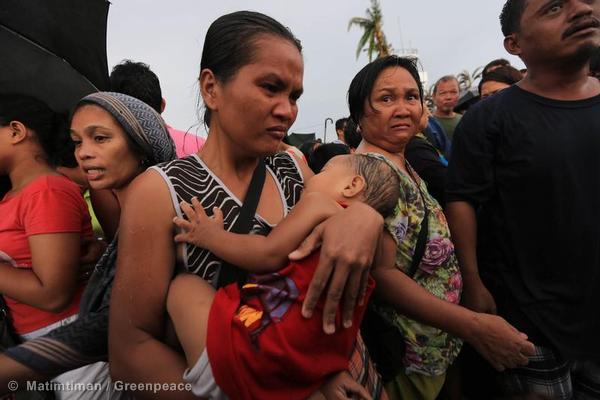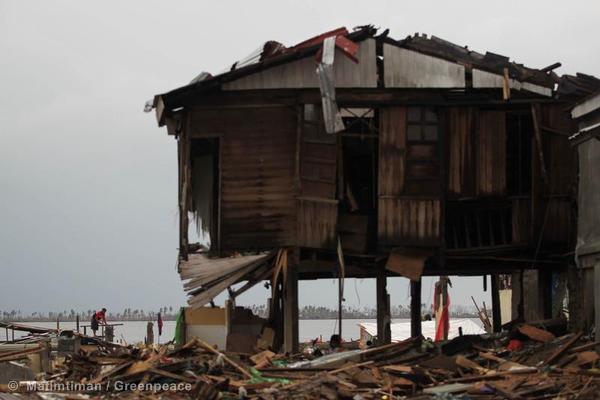
This week I watched the destruction from typhoon Haiyan in my home country, while governments continued to stall meaningful efforts to address climate change – and my whole view of the climate fight has intensified. I am a reasonable person. Calm even. But this inaction while Filipinos are suffering from the wrath of this monster typhoon makes me angry. They are hungry and wet and cold, their houses and livelihood destroyed, and lives of loved ones lost. The negotiators at the UN climate conference this week surely understand that failing to dramatically reduce carbon pollution will mean more suffering, not just in the Philippines but in vulnerable communities around the world. But do they care? At this point, I think the climate battle should continue only with as much intensity and power as the super typhoon Haiyan.
SEE MORE PHOTOS FROM TYPHOON HAIYAN
Seeing people’s suffering and hearing heart wrenching stories is sadly becoming all too familiar and common. No person, especially those living simple and low-impact lives should be made to suffer like this – yet that will be the future for so many millions living in especially vulnerable places around the world if climate change continues unchecked. Rising seas and stronger storms are among the biggest threats to island nations like the Philippines, while drought, ocean acidification, and extreme heat threaten yet more vulnerable communities.

A man looks for salvageable items from buildings destroyed by Typhoon Haiyan
The people in the path of typhoon Haiyan had a few days warning and thought they were prepared. The government thought it was prepared – but how can anyone truly prepare for this monster of a typhoon as it wipes out an entire city, a whole island, practically, a region? A city completely flattened by the winds, and storm surge and submerged underwater? Coconut trees flying around and yes even people. The magnitude of this storm was something that one cannot imagine, much less prepare for.
I’ve been following news and looking at coverage – photos and videos of the destruction, the aftermath, the stories of the people who have managed to survive – they are heart-wrenching and just sad. These people live simple lives and use much less of the fossil fuels that are driving climate change than those in rich countries – but they are the most affected, are most vulnerable while the least able to cope, not just with the immediate impacts of climate change but with the aftermath and the struggle to restore and rebuild their lives after that. And what most Filipinos believe, unless you are God, you cannot bring back lives.
Media and government are starting to throw out numbers – homes destroyed, in billions of pesos in damage to property and economic impact, death toll, and the number of survivors and I start to think, forget about the numbers, they are too many to count. But, no. I think we should remember every number. Every single one because one number meant the world to a loved one, or a family. Each number should be remembered because they are a year’s worth of hard work by that Filipino overseas worker who spent his whole life away from his wife and children to provide a roof over their heads. That number represents a farmer’s lifelong toil, destroyed while so-called leaders continue to debate climate action. We should remember the numbers because they will just continue to grow unless world leaders – and all of us – make real progress to reduce carbon pollution and keep coal, oil, and gas in the ground.
I urge world leaders to read or listen to the speech from Yeb Sano, head of the Philippines’ delegation to the UN climate negotiations. But more importantly I urge them to look at the footage of destruction, to the chaos and misery and suffering of ordinary men and women, old people and children. Watch them again and again and again and yet again. If that does not move them, maybe nothing ever will.
Try to look directly in their eyes and maybe you will have a glimpse of their suffering. Try to look them directly in the eye, if you can, and tell them there is hope and that you will do something about it. If you can.


